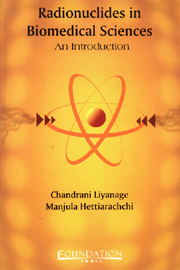Book contents
- Frontmatter
- Contents
- Forewords
- Introduction
- 1 Atomic and Nuclear Structure
- 2 Radiation Detectors
- 3 Units of Radiation Measurements
- 4 Iodine–125
- 5 Radioimmunoassay
- 6 Quality Control in RIA
- 7 Radiolabelled Compounds
- 8 Radiation Safety
- 9 Radiation Protection
- 10 Background Radiation
- 11 Storage
- 12 Contamination
- 13 Radioactive Waste
- References
6 - Quality Control in RIA
Published online by Cambridge University Press: 26 October 2011
- Frontmatter
- Contents
- Forewords
- Introduction
- 1 Atomic and Nuclear Structure
- 2 Radiation Detectors
- 3 Units of Radiation Measurements
- 4 Iodine–125
- 5 Radioimmunoassay
- 6 Quality Control in RIA
- 7 Radiolabelled Compounds
- 8 Radiation Safety
- 9 Radiation Protection
- 10 Background Radiation
- 11 Storage
- 12 Contamination
- 13 Radioactive Waste
- References
Summary
DATA PROCESSING IN RIA
Although the principle of RIA is quite straightforward, the data obtained in RIA needs processing appropriately in order to obtain the best results. Because the relationship between response (i.e., activity of bound fraction or the free fraction) and analyte concentration is frequently non-linear (often sigmoid as shown in figure 5.3), a suitable method of relating the concentration to the response is required. The standard curves shown in figure 5.3 are only one method of achieving this.
The data processing, such as curve fitting to standard curve data, precision profiling, interpolation of unknown values etc., is most conveniently achieved using one of several computer programmes such as Multicalc (Wallac) or PC/RIA (IAEA, Vienna) or SP line. Most assayists are ill-equipped to scan or evaluate data by eye for such phenomena as non-linearity values, variance heterogeneities and precision. A multiprocessor-based programme with extensive statistical perception will yield important and essential information which would usually be lost, especially where manual methods are used.
The advantages of a computer data processing are:
Speed
Arithmetic accuracy
Automatic plotting and display of data in any desired and programmed format
Storage over long periods of quality control (QC) parameters, which can be averaged and the QC values of the current assay referred to the average automatically
Modification of the standard curves, if desired, under special circumstances
The last advantage mentioned above allows one to remove one or some of the standard points from the plot and even to feed in new data points, to get better quality control values. However, these practices should be avoided or used with circumspection.
- Type
- Chapter
- Information
- Radionuclides in Biomedical SciencesAn Introduction, pp. 61 - 84Publisher: Foundation BooksPrint publication year: 2008



